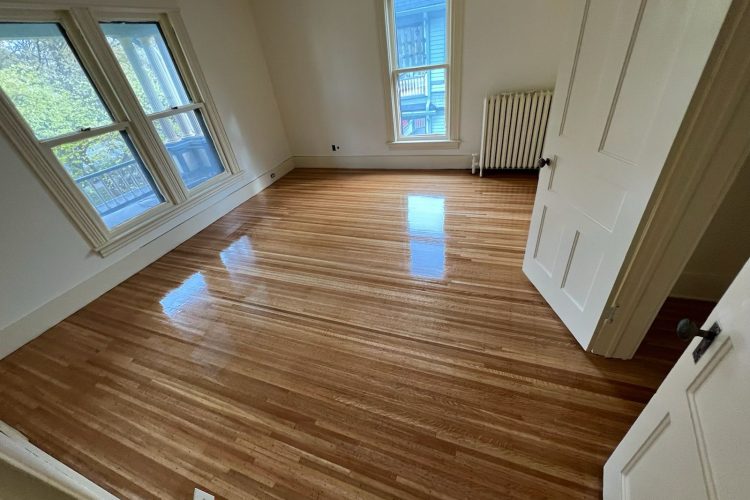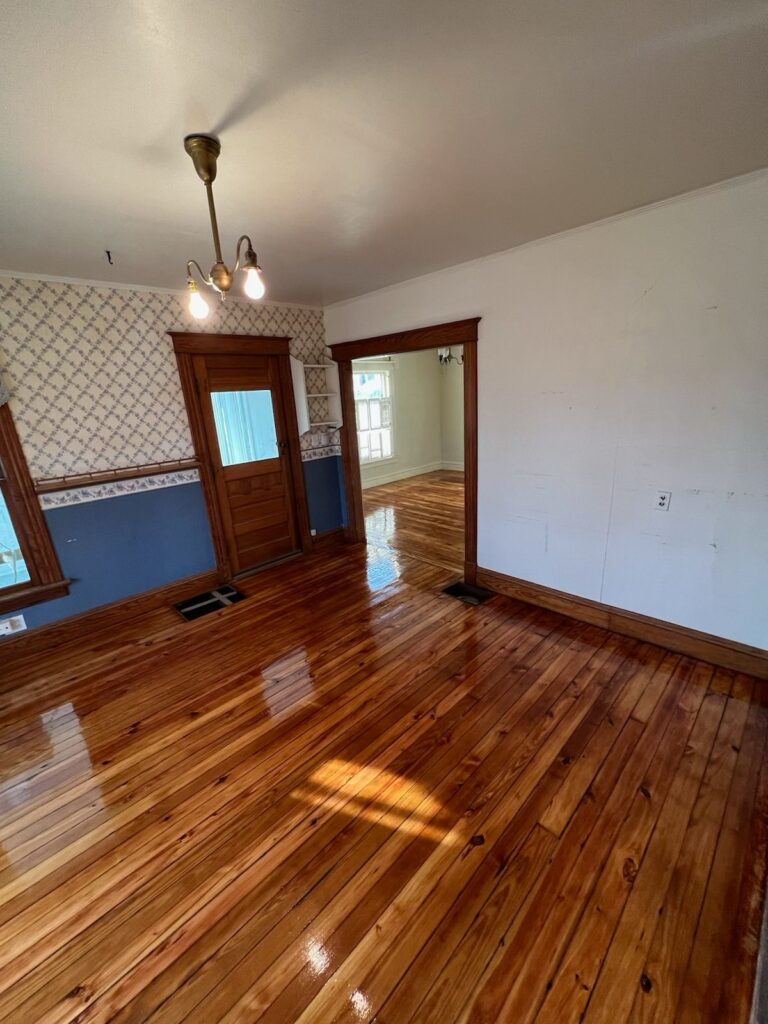7 Types of Wood Flooring:
Hardwood Flooring Guide
There are a number of types of wood flooring that homeowners can choose for their home’s floors, each of which has different relative advantages and disadvantages. Read on to learn more about the wood flooring types and the factors to consider when you’re choosing which kind you want to use.

What is Wood Flooring?
Wood flooring is any type of permanent floor that has the appearance of wood, whether it is made out of natural or synthetic lumber. Wood is a versatile flooring material that comes in a number of styles, colors, and species. There are two main types of wood flooring, which are solid wood and engineered wood.
- Solid hardwood flooring: Solid wood floors are made up of solid, wide planks of hardwood that are fitted together using the tongue and groove method. This hardwood is the longest-lasting kind of wood flooring but is also the most expensive. It is also vulnerable to warping from humidity, so it should not be used in high-moisture areas of the home or on the ground floor of your floor plan.
Engineered Hardwood Flooring: Engineered wood floors involve laying a top layer of wood over a subfloor (sometimes made of multiple layers of wood, others of synthetic materials like concrete). Engineered wood flooring is slightly cheaper than solid wood flooring. It also holds up better against moisture and humidity than solid hardwood, though it is not completely water-resistant.
Free Quote
7 Types of Hardwood Flooring
Once you’ve decided whether you want to have solid wood or engineered wood flooring, you can choose from a number of wood species that will influence the appearance and functionality of your floors. Here are a few popular species of wood that homeowners can choose from for their new flooring.
- American walnut: American walnut is a soft, dark wood that has a distinctive look of swirled grain. This makes this kind of wood a striking design choice, but it is susceptible to denting and scuffing and should not be used in high-traffic areas of a home.
- Bamboo: Bamboo flooring is made up of compressed strands of bamboo, which means that it is not natural wood. However, it is considered wood flooring because it has the appearance of wood. It is also two to three times harder than most natural woods and cheaper by the square foot. Bamboo is also a fast-growing plant, making it eco-friendly and widely available. Bamboo isn’t as easy to stain as real wood, home improvement stores often sell it prefinished and in a number of color variations.
- Cherry: Cherry wood is a popular flooring material, but one that is more expensive because of its enviable appearance. It has a versatile, light reddish-brown color with visible, swirling grains. However, it is highly photosensitive and liable to darken in the first few months after installation. It is also the softest natural wood flooring material, and it is highly vulnerable to scuffing, denting, staining, and warping.
- Maple: Maple is another popular hardwood that grows in the Northern US and Canada. Maple flooring is usually harder than oak and is often used in bowling alley lanes, and other underfoot areas.
- Oak: Oak is the most common hardwood species used in flooring in the US because it is durable, affordable, and easy to work with. Red oak (which has a darker red appearance) and white oak (which is golden brown) are popular flooring choices. White oak flooring has a hardness level of around 1360, making it durable to high-traffic areas of your home.
- Parquet: Parquet flooring dates back to the parqueterie courts of 1600s France. It is not a type of wood, but a fashion of laying wood plank flooring. Parquet flooring involves arranging small panels of one wood into a geometric, angular mosaic. Parquet floor patterns include square parquet, chevron parquet, or herringbone parquet. Parquet flooring requires frequent upkeep, but also highlights the natural beauty of the grain pattern and adds value to your home.
- Pine: Pine is a relatively soft wood, abundant in the US and Canada making it a cheap and sustainable flooring option. Pine is not always great for refinishing, as it dents and scratches more easily than other hardwoods. However, the charming grain and versatile white and yellow hues of this wood make it a popular decor choice.


